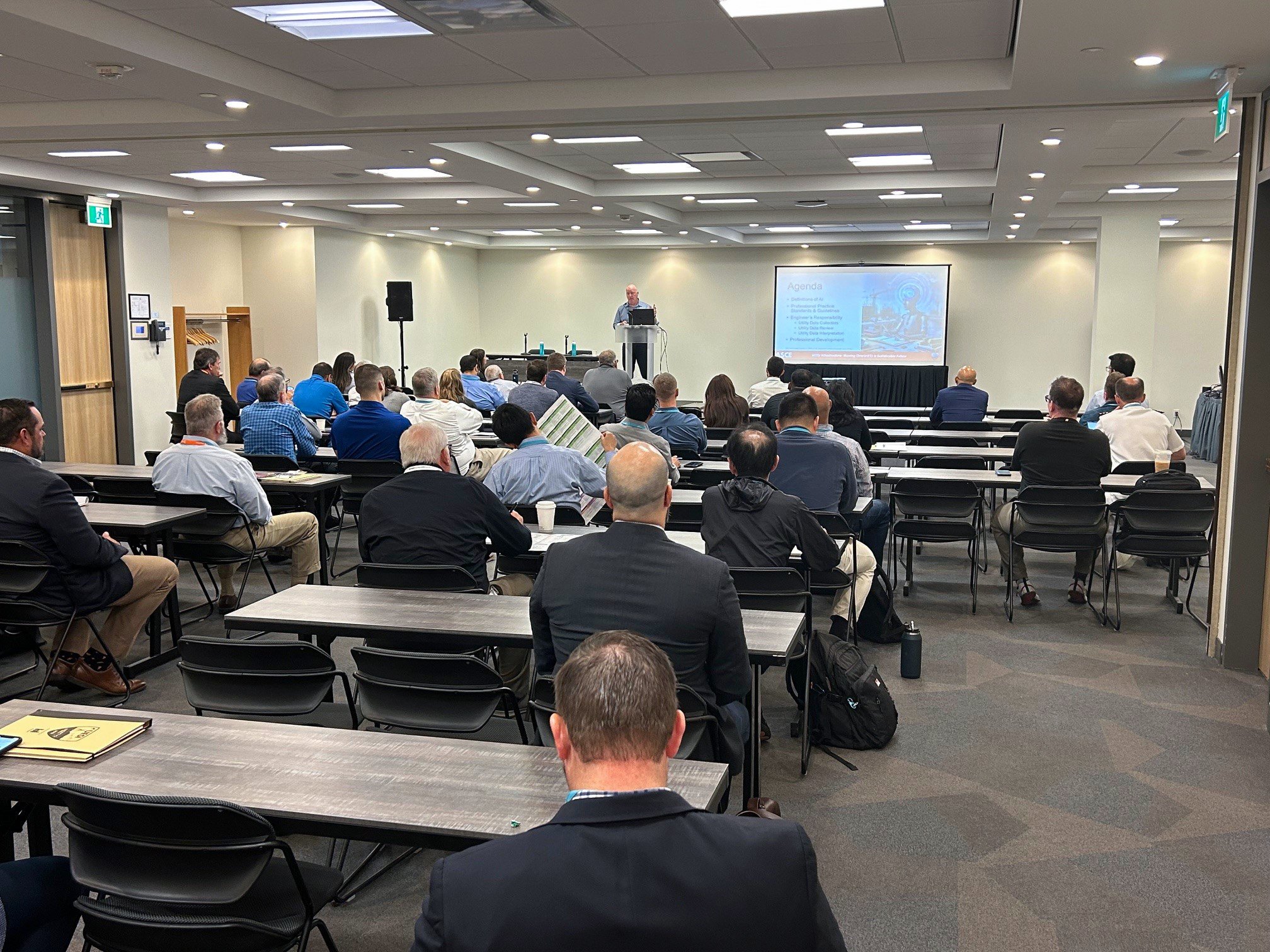AI Applications in Subsurface Utility Engineering

Blaine Hunt, Professional Engineer at T2 Utility Engineers, recently delivered a well-received presentation at this year’s 2024 UESI Pipelines Conference in Calgary, Alberta, Canada, focusing on the issues that should be considered when assessing the increasing application of Artificial Intelligence (AI) in engineering.
There was a particular focus on topics related to T2ue’s area of expertise, Subsurface Utility Engineering (SUE). His presentation, titled “Artificial Intelligence Use within Utility Engineering Projects and the Professional Engineer’s Responsibility,” explored the complex challenges and opportunities that AI presents and discussed how to think about AI within the context of Standard of Care requirements within the professional engineering practice. Blaine did not profess to have the answers but provided thoughtful questions with context to generate discussion for future decision-making.

As AI technologies continue to evolve, their influence is increasing. Engineers must now consider how AI can appropriately be used within a project while also ensuring that the Engineer who will be signing and sealing the data deliverables understands and can document the limitations or possible impacts of AI on the quality of the information being created. The industry should be evaluating safety, risk, and ethics for the use of AI in engineering practice and the impact on the Professional in Charge as well as the project.
Key Questions Raised:
- AI cannot replace Professional experience: Blaine pondered whether Artificial Intelligence has the potential to replace engineers, and concluded this is unlikely for a variety of reasons and focused on the changes that may be necessary to incorporate AI responsibly, and how engineers can promote the responsible use of AI in their practice.
- Review of Source Data: The topic of the source data requires careful attention. Multiple issues were raised, including reviewing the intended purpose of the data collected, proprietary data that is released under Non-Disclosure Agreements for specific projects, and how to determine the validity of data that may include errors or omissions.
- Need to verify AI data quality: Blaine raised the question of whether AI should be treated as a subordinate under professional standards, which dictate an engineer's responsibility for the work of their team. He also explored ways in which AI “decisions” and output can be effectively monitored and verified to the high standards of professional engineering practice.
- Transparency in AI Usage: Should AI be explicitly acknowledged in professional engineering work products? Blaine examined the importance of transparency and the potential need for disclaimers when AI is used in Subsurface Utility Engineering processes.
- AI Data Collection, Review, and Interpretation: There are some critical questions that engineers should ask regarding data analysis conducted by AI tools, such as whether data was analyzed in the correct sequence needed to make accurate conclusions, potential copyright issues with source material, and how/if assumptions made by AI models can be quantified, identified, and reviewed during data analysis.
In summary, although AI’s role in Subsurface Utility Engineering is still in its early stages, the development of new use cases will shape best practices in its future applications, making conversations about it today especially important. By sharing his insights from more than 20 years of engineering and quality management expertise at the industry, Blaine is encouraging thoughtful discussion on this topic, to minimize unintended consequences and negative impacts.
For more information or discussion, contact us via our contact form.